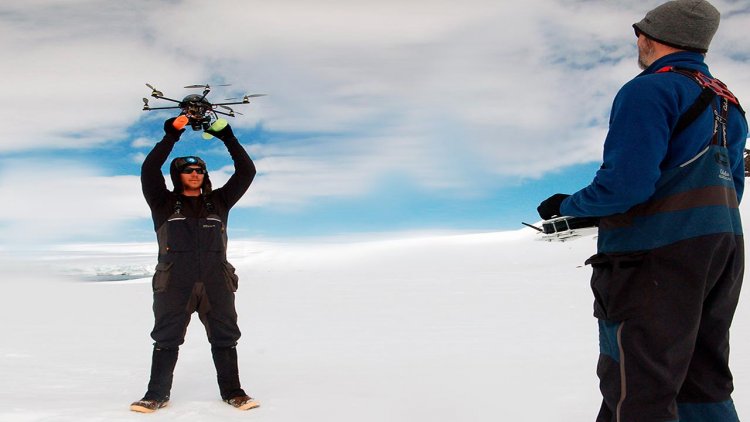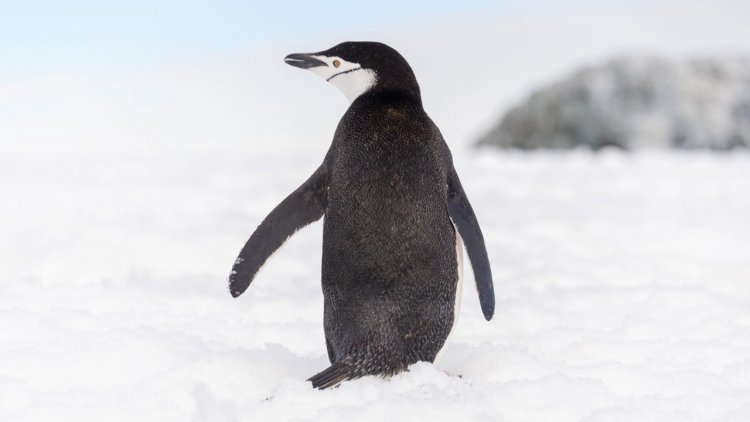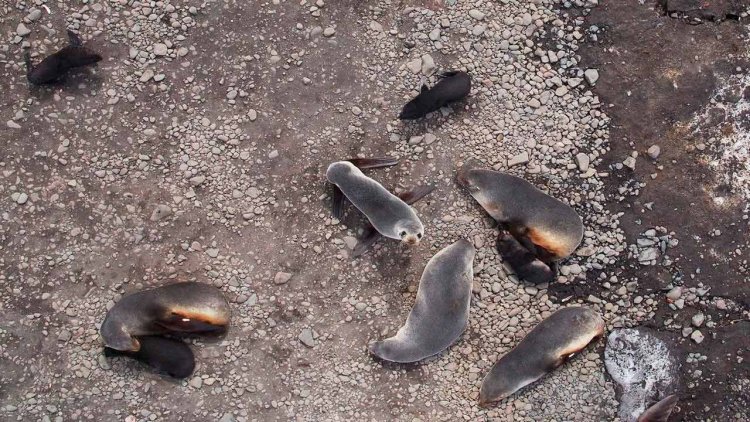NOAA Fisheries scientists have published one of the largest studies of how wildlife respond to Unoccupied Aerial Systems (UAS), also known as drones. They analyzed the behavioral responses of three species of Antarctic predators—leopard seals, Antarctic fur seals, and chinstrap penguins—to drone surveys.
Despite large differences in the size and ecology of these species, all three reacted similarly; reactions to drones at survey altitudes could not be detected. However, all species did react to humans conducting traditional ground based surveys.
Between January 2017 and March 2018, wildlife experts from the Southwest Fisheries Science Center braved sub-zero temperatures in one of the most isolated areas on the planet, where wildlife vastly outnumbers humans. The researchers’ findings were recently published in an article in the journal Frontiers in Marine Science. The research was conducted as part of NOAA’s U.S. Antarctic Marine Living Resources Program, which uses an ecosystem-based approach to support conservation and management in the Southern Ocean.
Douglas Krause, lead author of the study, said:
“It’s not hard to imagine that flying one of these buzzing machines too close to wildlife may negatively affect the birds, seals, and other animals. The goal of our study was to assess what the effect of drones on animals might be, and to help set standards for future studies so that we can get the best information possible.”

Among other findings, results showed that approaching seals from down wind, and surveying penguin populations early in the breeding season, was less likely to disturb them. But, importantly, animal reactions to the drone were compared to traditional data-collection methods, in addition to assessing how research can minimize impacts on wildlife. He said:
“We don’t just ask is this drone creating an effect. We ask, how do animals respond to drones in comparison to what would happen if drones were not used?”
The research assesses disturbance from UAS operations. It compares behavioral responses to UAS flights to those from ground surveys conducted by humans that approach animals on foot. The study informs users and policymakers about preferred flight methods. It also looks at the different behavioral and physiological responses to UAS based on:
- Flight altitudes
- Stages of breeding chronology
- Other site factors
Researchers used a common type and size of drone to assess the behavioral responses of three different Antarctic species to drone flights. They gathered behavioral observations during ground surveys, and periods when no drones or humans were present as a baseline for comparison.

Animal response to disturbance can be difficult to generalize because the response may depend on the age of the animal, its condition, or its social status within a group. A single overflight, therefore, probably won’t capture the range of reactions you might expect in a wild population. It can only provide a partial indication of how drones impact wild animals.
Study co-author Jefferson Hinke said:
“In our study, we were curious if the animal responses to drone overflights change during their annual reproductive cycle and so we repeated our experimental flights several times over an entire breeding season. This approach helped to identify periods when animals are more vulnerable to drone impacts.”
Behavioral responses generally increased as the drones flew lower, and for penguins those increases intensified as the breeding season progressed.
George Watters, Division Director of the Antarctic Ecosystem Research Division, said:
“Concerns that drones have negative impacts on wildlife are legitimate and understandable. Undoubtedly, drones have impacts, but so do old-school methods of data collection like handling animals or walking into their breeding areas. In many cases, drones can collect critical data with substantially fewer impacts than old-school methods. That is the question we should be answering when we are considering how to manage our use of drones.”
Collecting observations about population sizes and health are keys to conserving and managing marine life. Previous studies demonstrated that drone-based tools can collect these metrics as accurately as traditional, ground-based methods. But, concerns about drone impacts on wildlife lingered.
Watters said:
“This study is important because the new technology provides a safe and efficient way to survey wild populations. In fact, in this case, new is better for both people and animals.”




